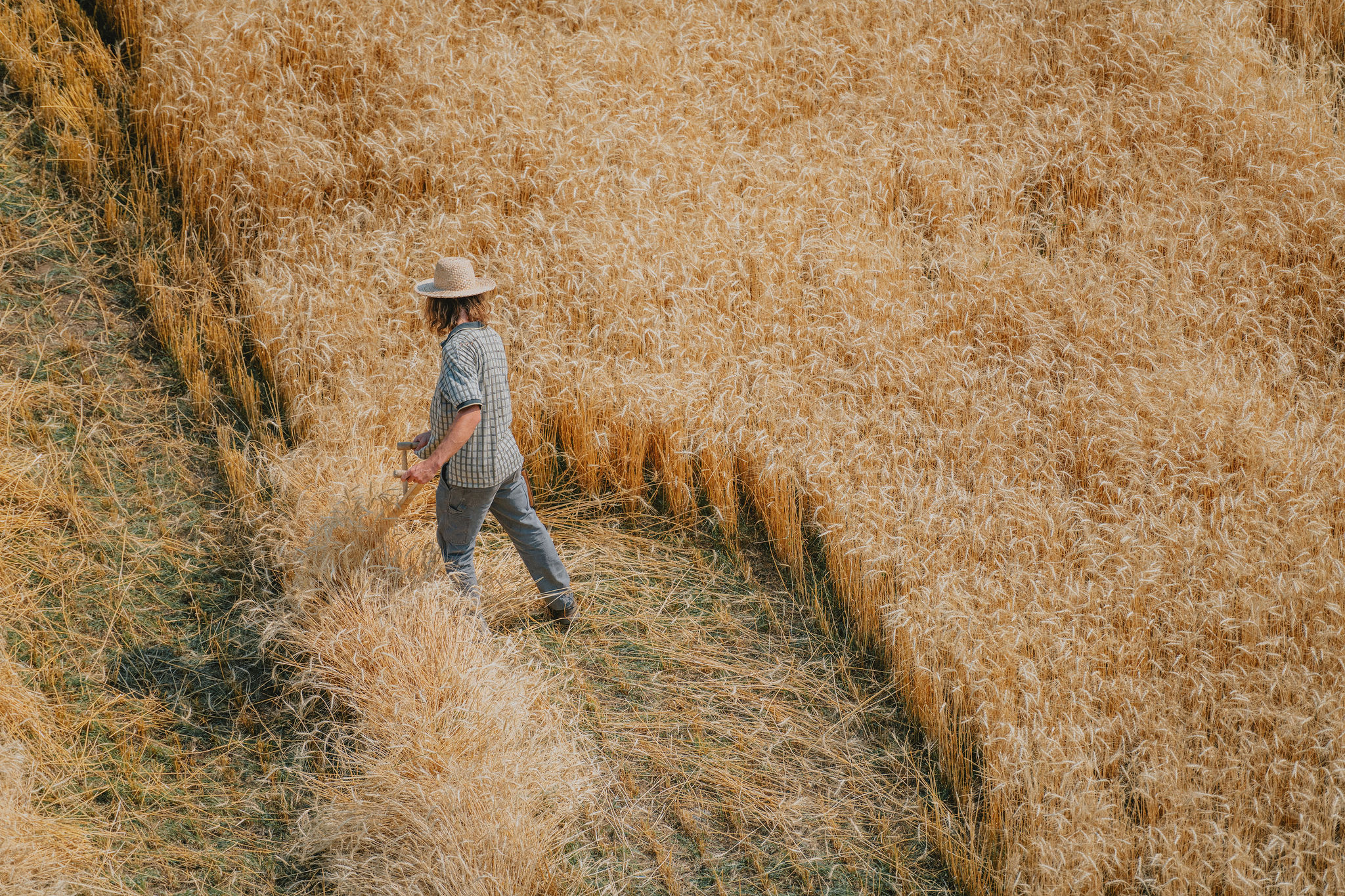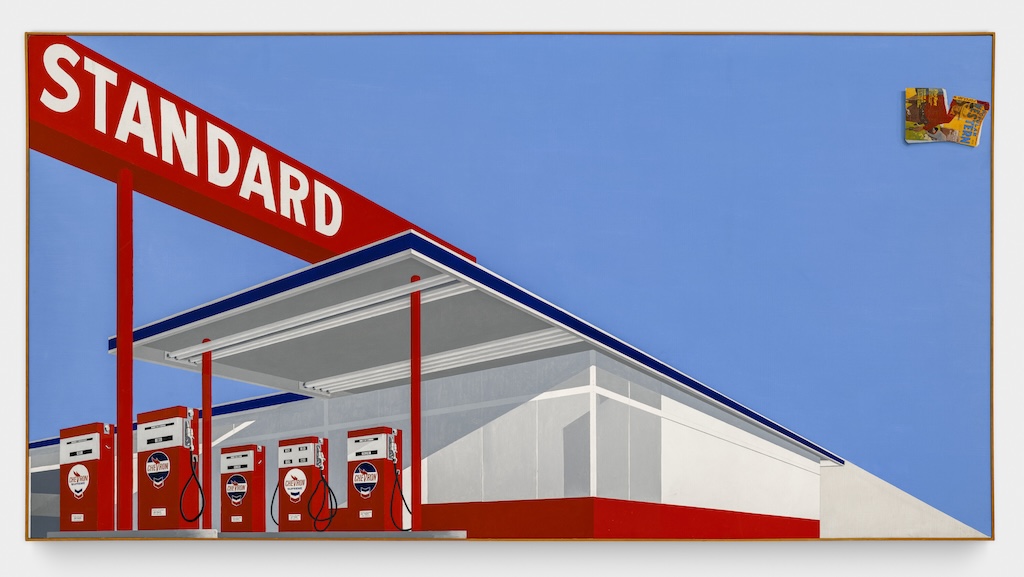While wheat fields are a common sight in Montana, this past year a new type of wheat field took root in the city of Bozeman, one that was agricultural—and also an artwork. Though not wholly dissimilar from a standard crop, the stretches of Bobcat (a variety of hard red winter wheat) were part of a new work by conceptual artist Agnes Denes, Wheatfield – An Inspiration (2024).
Presented by Tinworks, a new non-profit art space in Bozeman with a mission centered on bridging the gap between the American West and contemporary art, Wheatfield – An Inspiration reimagines Denes’ most well-known work, Wheatfield – A Confrontation (1982), which saw her plant a two-acre wheat field on Manhattan’s southernmost point. Here, positioned on some of the world’s most prime real estate, the work invited reflection on societal systems of value, priorities, and human needs. Just over 40 years later, Denes continues these lines of inquiry.
Agnes Denes, Wheatfield – An Inspiration. The seed is in the ground (2024). Photo: Blair Speed / Speed Creative. Courtesy of Tinworks, Bozeman, Montana.
The iteration at Tinworks follows another recent reprisal of the original 1982 installation, Honouring Wheatfield – A Confrontation (2024), this time staged in Basel, Switzerland, outside of the Art Basel fair in the city’s Messeplatz. Unlike the present and historic versions, however, in Basel the wheat was planted in moveable Euro pallets, an experiment in avant-garde crop growing (or, as Denes thought of it, “vertical fields”) that may become necessary in the future.
Back in Bozeman, the exhibition of Wheatfield – An Inspiration debuted on June 15, 2024, but the project began in October 2023. For those unfamiliar with the propagation of wheat (as was I at the time of this writing), it typically needs a “dormancy period.” In line with the growth cycle of this specific varietal (which Denes chose for its close association with the region), the wheat was first seeded in the fall of last year, after which it went through winter dormancy before flourishing this spring and summer.

Agnes Denes, Wheatfield – An Inspiration. The seed is in the ground (2024). Photo: Blair Speed / Speed Creative. Courtesy of Tinworks, Bozeman, Montana.
“Spending time in the Wheatfield was unforgettable. Wheat fields are a common sight in Montana, but few people, aside from farmers, get the chance to experience them up close, to actually wander through such a powerful and iconic presence,” said Tinwork’s inaugural director Jenny Moore.
Coinciding with this period of dormancy, Denes released Questionnaire, a series of questions about issues and concerns around the future of humanity, including A.I., and global warming. Denes welcomed anyone to respond. Harkening back to Wheatfield – A Confrontation, the Questionnaire was first deployed in 1982 and featured thematically similar questions, which have since evolved to reflect our present-day anxieties and hopes.
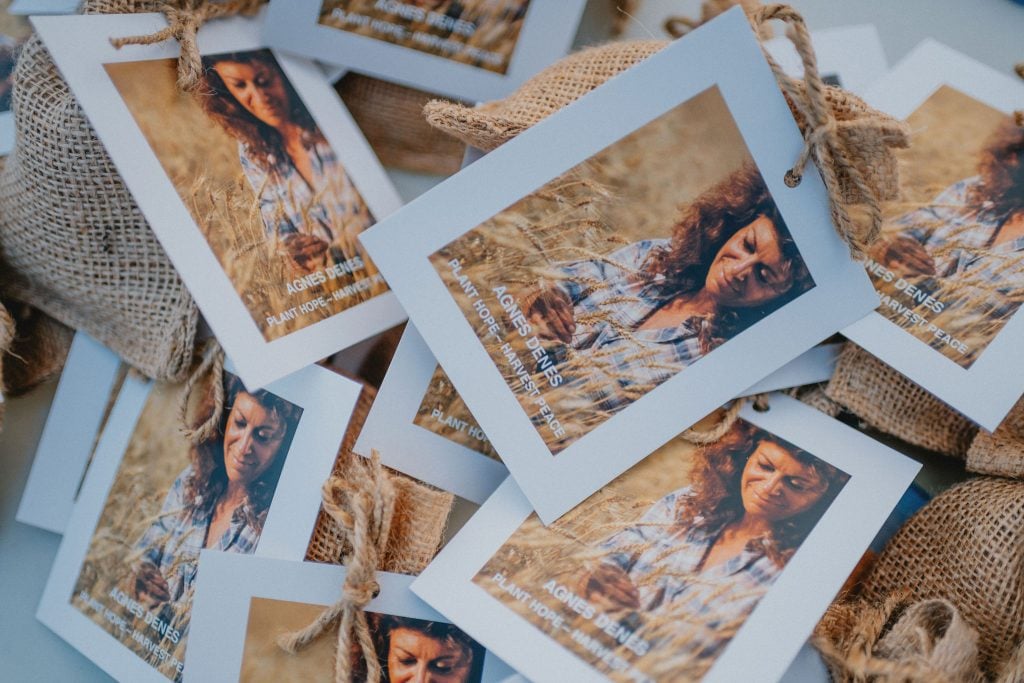
Packets of wheat seeds offered to the community as part of Agnes Denes, Wheatfield – An Inspiration. The seed is in the ground (2024). Photo: Blair Speed / Speed Creative. Courtesy of Tinworks, Bozeman, Montana.
Coinciding with the first planting, as part of the project, the local community was invited to participate and expand the reach of Wheatfield – An Inspiration by planting provided wheat seeds wherever there was fallow land in the city. Wheat has long played a significant role within the economy of Montana, and though pervasive, planting wheat in otherwise unexpected spaces all over Bozeman made this fact manifest while drawing attention to otherwise abstract ideas around ecology, urban development, and landscape ideals.
Locality and community have remained intrinsic elements to the project’s success, from initial planting to reaping to processing to, ultimately, eating.
“For Agnes, community involvement was vital to this new iteration of Wheatfield,” said Moore. “It began with the selection of Bobcat winter wheat, developed by a neighbor of Tinworks who is a wheat breeder and retired research associate at Montana State University. A local first-generation conservation farmer planted the field. The wheat seeds we distributed to the public to plant in solidarity with the project were donated by a local food and farming organization. Numerous volunteers, visitors, students, and neighbors tended, weeded, and harvested the crop.”
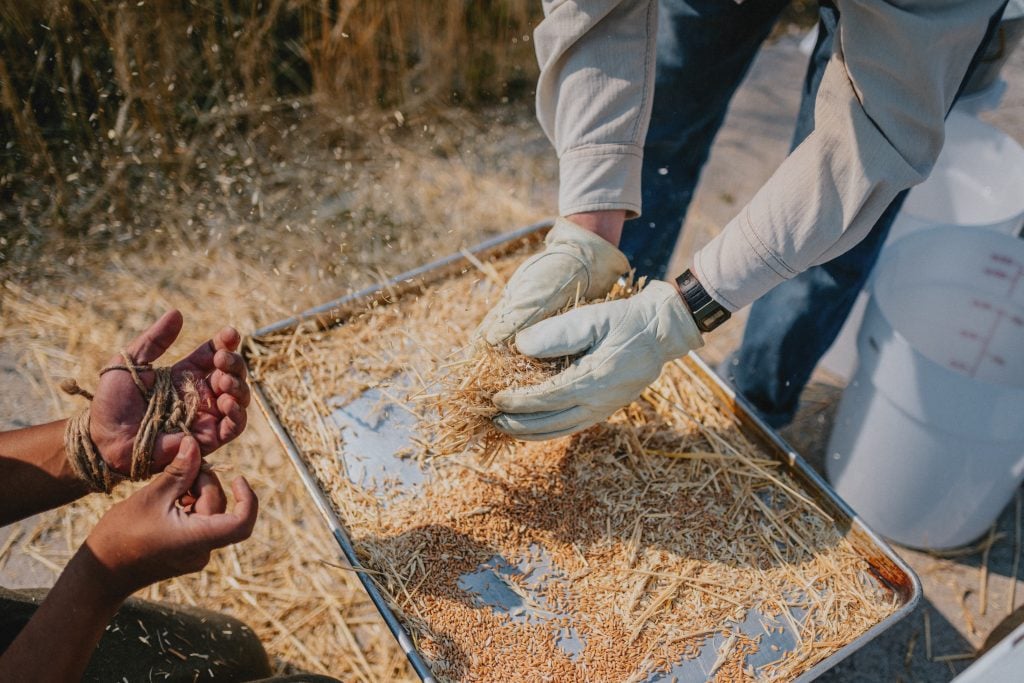
Agnes Denes, Wheatfield – An Inspiration. The seed is in the ground (2024). Photo: Blair Speed / Speed Creative. Courtesy of Tinworks, Bozeman, Montana.
The “public harvest celebration” of Wheatfield – An Inspiration occurred on September 8, a day-long event replete with traditional hand-harvesting demonstrations led by Montana State University Plant Sciences Department students, as well as the various steps associated with processing wheat at a small scale. Following harvest, the wheat was milled, and this month local bakery Wild Crumb is tasked with taking the flour and baking it into bread, which will both be sold as well as distributed to the community in partnership with Gallatin Valley Food Bank.
“Tinworks’ Wheatfield has come full circle in the most beautiful way. It is a living artwork, an inspired place, a community space, and now a food source,” said Moore.
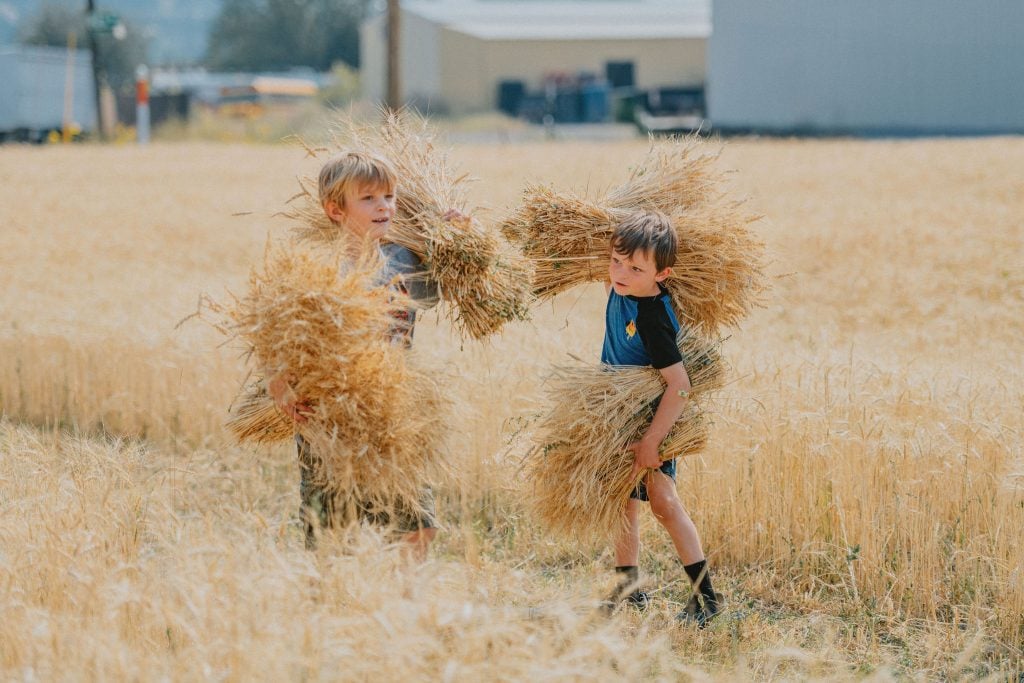
Agnes Denes, Wheatfield – An Inspiration. The seed is in the ground (2024). Photo: Blair Speed / Speed Creative. Courtesy of Tinworks, Bozeman, Montana.
Wheat is one of the oldest cultivated crops, with a history stretching roughly 10 millennia and serving humanity as a source of sustenance and a potent symbol of growth, transformation, and prosperity. Its near universal presence across human history is perhaps the key to understanding how Denes’ recurring deployment of planted wheat in her practice continues to hold profound cultural and societal relevance, even more than four decades after Wheatfield – A Confrontation was grown in New York. The newest evolution of Denes crops in Bozeman, Wheatfield – An Inspiration, continues this legacy and emphasizes the project’s adaptability, continuing an inquiry into the core of our humanity, from mere survival to the highest hopes for the future.






